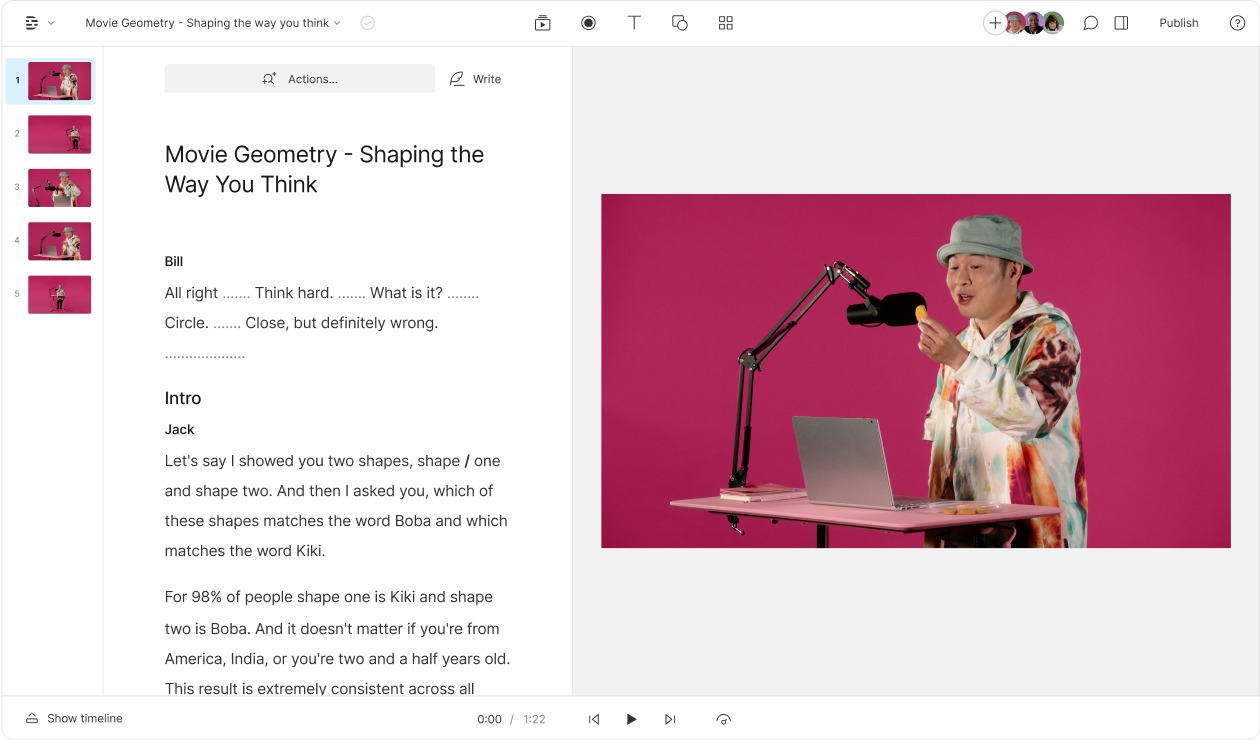What type of content do you primarily create?




That stomach-dropping moment hits every YouTube creator eventually: your once-climbing subscriber count freezes and those soaring view numbers suddenly flatline. Your content remains solid, your publishing schedule hasn't changed, and your production quality is just as good—if not better—than before. Yet somehow, the views plateau or decline. New subscribers become rare sightings.
This growth wall isn't just frustrating—it's a legitimate crisis for creators of any size. But before you overhaul your entire content strategy or descend into analytics-checking madness, there are some surprisingly effective steps you can take to revive your channel's growth.
Advanced YouTube SEO tactics
If your channel’s growth has plateaued, advanced YouTube SEO tactics can give you a jumpstart. Tools like Ahrefs, SEMrush, or TubeBuddy help pinpoint low-competition keywords that match your audience’s search intent. Even closed captions can add a layer of discoverability by providing textual signals for YouTube’s algorithm. Rewriting your video descriptions with specific long-tail keywords can further nudge the platform to recommend your content. Consistent optimization of titles, tags, and metadata signals that you’re keeping things fresh. A solid SEO plan, paired with compelling storytelling, ensures new viewers can find your channel in the vast YouTube universe.
Why your YouTube channel stopped growing
YouTube channels typically stagnate due to one or several common issues. If your YouTube channel stopped growing, understanding these core problems is the first step toward revitalizing your audience growth.
New viewers vs returning audience
Even top-performing videos sometimes fail to attract new audiences, hurting growth and overall channel health. This is one of the most common factors affecting YouTube channel growth that creators overlook.
To identify if this is happening to your content, check your video's analytics in the "Audience" tab to see the new vs. returning viewers graph. You can also view similar data for your entire channel in the channel analytics section to spot broader growth patterns.

This video performed well, but most views came from returning viewers. While creators might see a successful video and try to replicate it, they should examine the viewer breakdown first. Without new viewers, your YouTube channel growth will inevitably stall. Compare it to this graph.

This video succeeded with both returning and new viewers. The first example, despite good performance metrics, drew almost no new viewers—a critical problem for channel growth and a clear sign your YouTube channel stopped growing naturally.
Examine why videos aren't attracting new viewers. YouTube analytics offer clues, but also ask yourself: What specific elements might deter new viewers from discovering or engaging with this content? This question is essential when diagnosing why your YouTube channel stopped growing.
Fixing low click-through rate
A common cause of stagnant views is low click-through rate—the percentage of viewers who click your video after seeing its thumbnail and title. Most content reaches new audiences through YouTube's recommendations, and the algorithm favors content that people actually click on. Higher click-through rates typically lead to more recommendations and can reverse a situation where your YouTube channel stopped growing.
Find this metric in individual video analytics under the Reach tab.

While good click-through rates vary by niche, for informational content with broad appeal, here are some benchmarks to consider:
- Under 4.5%: Too low. Rework thumbnail and title strategy completely
- 4.5% to 5.5%: Mediocre, but might succeed through other strengths
- 5.5%+: Strong chance of success, especially above 6-7%
To improve low click-through rates, make dramatic changes to thumbnails, titles, and content selection. Minor tweaks rarely help when your YouTube channel stopped growing. Use YouTube's thumbnail testing tool for videos still receiving regular views to determine what actually resonates with your audience.
Selecting topics that drive channel growth
Poor topic choice often reveals itself in low click-through rates, but timing can also be a crucial factor affecting YouTube channel growth.
As a producer, I've created videos on films, TV shows, and news events. Some plateaued initially but later doubled or tripled viewership when external events sparked interest—new seasons, sequels, or news developments brought fresh audiences searching for related content.
These surges happened not from changed thumbnails or titles, but because people suddenly cared about the topic.
Study successful creators in your space and use Google Trends to gauge topic popularity and timing. This research can identify opportunities to revive a YouTube channel that stopped growing by aligning with audience interest cycles.
Improving viewer retention
High click-through rates don't guarantee sustained views or channel growth. Check Average View Duration (AVD) and retention graphs in YouTube analytics to understand what happens after viewers click.
Problems often arise when titles and thumbnails are afterthoughts, creating misalignment with content that leads to rapid viewer drop-off. Unexpected technical issues or content problems may also cause viewers to leave. To diagnose what can prevent a sudden drop in a video's audience retention chart, check the detailed retention graph in the Engagement tab.

Monitor how many viewers watch past 30 seconds or one minute, and note any major drop-offs. These points often indicate specific content issues that, when fixed, can help restart growth for a YouTube channel that stopped growing.
Strong retention signals value to YouTube's algorithm, encouraging wider distribution. This is one of the most powerful factors affecting YouTube channel growth that creators can directly influence through content improvements.
Defining your channel niche and consistent branding
Establishing a clearly defined niche keeps your content focused and makes it easier for viewers to understand what you’re all about. Audience feedback and analytics, as highlighted in YouTube’s official blog, can guide you toward the topics that resonate most with your core subscribers. By grouping similar videos into playlists, you tap into ‘content clustering’ that reinforces your brand identity and encourages binge-watching. Visual consistency across thumbnails, channel art, and video overlays helps your audience immediately recognize your work. When your style and messaging remain cohesive, new viewers get a clear sense of your channel’s vibe right away. Over time, this brand clarity can help re-energize stagnant subscriber growth.
How to revive a stagnant YouTube channel
Creators in ruts often cling to old habits—editing styles or topic selection—out of obligation to longtime viewers. But stagnant channels usually lose viewers steadily regardless. Maintaining old approaches when your YouTube channel stopped growing only guarantees further decline.
This doesn't mean abandoning loyal followers, but experimentation with new formats, production styles, and topics is essential for channel growth. The most successful creators constantly test new approaches while maintaining their core value proposition.
FAQs
Why did my channel's watch time drop suddenly?
Watch time can dip when YouTube’s algorithm shifts its recommendations toward different topics or formats. If viewers sense a mismatch between your title and actual content, they bail early, harming your retention metrics. Consistency in upload schedules also matters; abrupt gaps can lead regular followers to drift away. Regularly monitoring YouTube's official blog and creator community updates helps you adapt quickly to any platform changes. When in doubt, experiment with new hooks, intros, or bonus content to recapture audience interest.
Should I use closed captions for SEO?
Absolutely—closed captions make your content more accessible while also feeding additional keywords to YouTube’s algorithm. According to the research, YouTube can crawl captions for relevant terms, potentially improving your search visibility. This extra layer of discoverability can help time-poor viewers who skim videos as well as international audiences. It’s a small effort that can lead to significant gains in watch time and engagement. Just ensure your captions accurately reflect the dialogue to keep viewers from clicking away.



























%201.svg)











